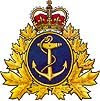
The original e-mail received from this gentleman (who went to great lengths to include his "official-I-am-a-federal-government-type" signature block...), went as follows:
"Good day Las tsummer we were travelling through the ********* and set anchor in the bay off of the swimming area at ******* Island. Upon pulling up our stern anrchor we discvoered we had not set in the ground, but on a groundline cable. As I recall the area has a cable warning in the docking bay, but nothing out in the middle of the arnchoring bay off the swimming beach. This should be marked."
Our initial reply was as follows:
"Dear Mr. *******, Thank you for your e-mail dated 21 May 2009, requesting information on navigational charts. Unfortunately, you have not provided us with enough information to assist you.
Is your concern that this submarine cable was not marked on your most up-to-date version of the navigational chart for this area? Or are you looking for information regarding above-water signage in the ***** Islands region?
Please send us more detailed information in order to help us better identify your needs.
Sincerely,
Us."
Today we received the following reply:
"Good day My comment was on both fronts. Although my charts are not the most up to date (and certainly are not digital), that line is not marked on it. More notably is that in a marked anchorage there is a submerged cable. Although there should not be a submerged line in such an area, if there must be one in this case, it is unmarked on land signs or floating buoys.
Today we received the following reply:
"Good day My comment was on both fronts. Although my charts are not the most up to date (and certainly are not digital), that line is not marked on it. More notably is that in a marked anchorage there is a submerged cable. Although there should not be a submerged line in such an area, if there must be one in this case, it is unmarked on land signs or floating buoys.
I apologise for any confusion this may cause by landing on the wrong person's desk, I have had to guess to whom this information should go to make our navigational waterways safe to anchor in.
Thank you for your assistance, "
I love e-mails like this one. Really, I do. This lad has absolutey no problem in admitting that he is in contravention of the Canada Shipping Act (specifically, the Charts and Nautical Publications Regulations).
I love e-mails like this one. Really, I do. This lad has absolutey no problem in admitting that he is in contravention of the Canada Shipping Act (specifically, the Charts and Nautical Publications Regulations).
If he had the latest, up-to-date charts, he would no doubt find that any legally laid underwater cable would be duly noted on that chart. These regulations do not apply to vessels under 100 tonnes, if the operator of the vessel can demonstrate an intimate knowledge of the waters in question. Something that our author here clearly cannot.
If there is a submarine cable, you will not find it marked by a floating marker in the middle of a bay. Any more than you will find a cartoon-type arrow sign informing you that: "YOU ARE HERE". It will be marked on a chart. A chart on which you are required to be able to find your position and anchor accordingly. This lad states that he "certainly has no digital charts", we can assume that he probably does not possess a GPS navigation system either.
If there is a submarine cable, you will not find it marked by a floating marker in the middle of a bay. Any more than you will find a cartoon-type arrow sign informing you that: "YOU ARE HERE". It will be marked on a chart. A chart on which you are required to be able to find your position and anchor accordingly. This lad states that he "certainly has no digital charts", we can assume that he probably does not possess a GPS navigation system either.
As there is no way of knowing how old/out of date this lad's chart is, the area may even no longer be designated as an anchorage position. You can see where I'm headed with this. He is lamely attempting to blame 'the gubmint' for not knowing something he is required by law to know.
Now that doesn't sound the least bit familiar, does it...?
If he sincerely did have an interest in 'making our navigational waterways safe', he would really work on honing his own personal knowledge and skills as a boater.
I'm just sayin'...
If he sincerely did have an interest in 'making our navigational waterways safe', he would really work on honing his own personal knowledge and skills as a boater.
I'm just sayin'...
So what did we answer him with?
"
Dear Mr. *******, Thank you for your email dated 25 May 2010, requesting information on whom to report the presence of unmarked underwater cables to, in the ***** Islands region.
Transport Canada's Navigable Waters Protection Program ensures navigational safety in Canadian waterways by carrying out the following activities:
Transport Canada's Navigable Waters Protection Program ensures navigational safety in Canadian waterways by carrying out the following activities:
- removing serious obstructions to navigation, such as unauthorized structures and sunken vessels and wrecks
- regulating the provision and maintenance of lights and markers to ensure navigational safety at all times, including during construction
- approving any works built or placed in, on, over, under, through or across navigable waters
Please contact their regional office for any additional information.
Navigable Waters Protection Program
Navigable Waters Protection Program
100 Front Street S
Sarnia, ON N7T 2M4
Tel.: 1-866-821-6631 8 a.m. - 4 p.m. Eastern Time
Fax: 519-383-1989 (Sarnia)
E-mail: nwpontario@tc.gc.ca
Information on the Navigable Waters Protection Program is available at the following URL:
www.tc.gc.ca/marinesafety/oep/nwpp/menu.htmInformation on boating rules and regulations for pleasure craft operators (Canada Shipping Act) is available through Transport Canada's Office of Boating Safety.
Transport Canada's Office of Boating Safety Office of Boating Safety carries out the following activities:
- develops standards and regulations relating to recreational boating safety and works with enforcement agencies to ensure that pleasure craft operators comply with these regulations
- helps reduce the environmental impact of boating on Canadian waters
- offers courtesy inspections of safety equipment for pleasure craft
- promotes boating safety through awareness programs and advertising campaigns
- provides information on accreditation for boating safety course providers and on pleasure craft operator competency certificates
The Office also operates a national toll-free boating safety information line, which provides information on the following subjects:
- boating and alcohol
- boating safety course providers
- hull serial numbers
- hypothermia
- the legal responsibilities of boaters, including the regulations that govern boating in Canadian waters
- proof of operator competency and the issuance, replacement or update of the Pleasure Craft Operator Card
- safety and personal protection equipment (e.g. life jackets and personal floatation devices)
- safety compliance notices (conformity or capacity plates)
- sail plans
Please contact the Office of Boating Safety for additional information.
Tel.: 1-800-267-6687 8 a.m. - 5 p.m. Eastern Time Boating Safety Information Service
Tel.: 1-800-267-6687 8 a.m. - 5 p.m. Eastern Time Boating Safety Information Service
Fax: 418-648-7337 (Québec)
E-mail: obs-bsn@tc.gc.ca
Information on the Office of Boating Safety is available at the following URL:
www.boatingsafety.gc.caInformation on the Office of Boating Safety is available at the following URL:
Please do not hesitate to contact us should you require additional information.
Sincerely,
Us".
Do you think he'll take the hint...???
Na-aaaahhhh... Me neither.
















No comments:
Post a Comment